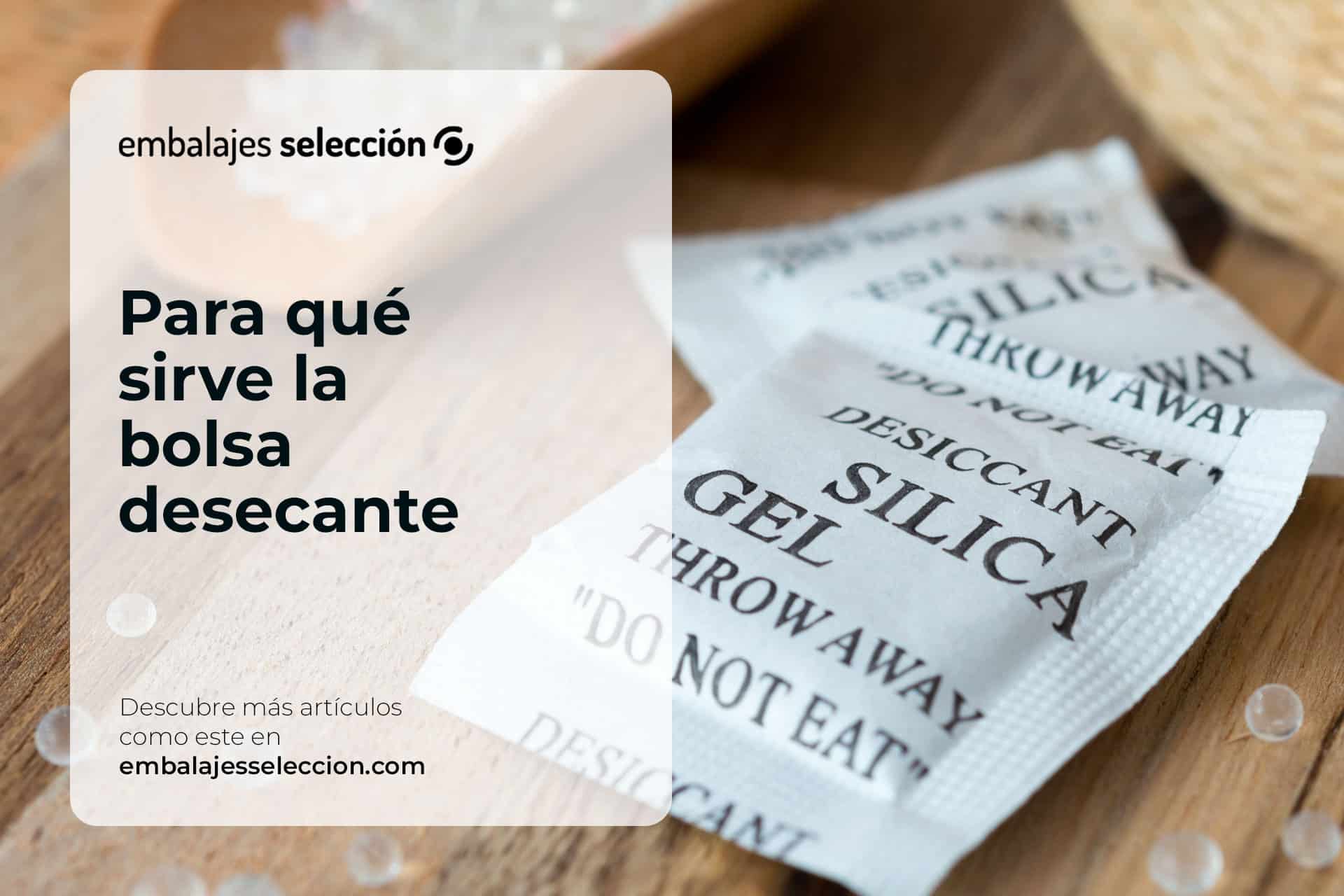Who hasn’t ever found a little bag of balls inside a package or packaging, especially if it contains a technological item? If we think about it, we have all seen them at some time, but most of us don’t know what their usefulness is and end up thrown away as useless objects. They are desiccant bags, and if we knew what a great function they have, the next time we come across them, we would definitely keep them. Do you want to know what the desiccant bag you come across is for? We tell you about it.
What is the purpose of the desiccant bag in a package?
It is not uncommon for a packed or packaged product to be subject to moisture or water. Both elements favor the oxidation and corrosion of materials, so avoiding these phenomena is essential if we want to preserve the object we are storing.
Let’s imagine that we buy a technological product. This is made of metals, and we all know the damage that water can do to them. Now, let’s go one step further; food, clothing, pharmaceuticals, car parts…. All of them can be affected by humidity, oxidation or corrosion, so avoiding them in a packed or packaged product is essential for the preservation and protection of the object it contains.
A desiccant bag, also called an anti-moisture or moisture absorber, is intended to absorb ambient humidity and improve the conditions for transporting and storing goods inside a package.
In addition to moisture protection, a desiccant bag is well suited to combat corrosion, dust and rust. In foodstuffs it helps to improve their preservation, in goods it helps them to have more time to reach their destination and, in addition, most of them are reusable and do not run out with a single use. Rarely has such a small object been used for something so big.
How a damp-proof bag works
Now that we know what a desiccant bag is for, let’s see how it works. The secret is in the material they contain. It can be made of magnesium silicate, calcium chloride, clay or silica gels, also called silica gels.
All these materials are desiccants, and are characterized by their drying properties, they are great moisture absorbers. Each desiccant bag can have a water vapor absorption power of 80 % humidity at an ambient temperature of 25 °C. Therefore, it prevents the object stored in the package from absorbing this humidity and allows to keep it completely dry to preserve its initial state.
The desiccants used in damp-proof bags are anhydrous or hydrated base-forming substances. A salt in its hydrated form tends to have a great capacity to absorb moisture from the air, drying it out and preventing any other object that may have a package from being able to get wet.
Where desiccant bags are used
Although we have referred to their use within a package or packaging, in reality desiccant bags have a wide range of applications and are used in many sectors. In shipping, industrial desiccant bags are of great importance in containers.
In maritime containers, it is very frequent the appearance of an effect called rain effect, which is the appearance of humidity inside the container. The placement of several units of desiccant bags distributed inside a container prevents moisture from being absorbed by the transported objects, protecting them so that they arrive in good condition at their destination.
But damp-proof bags are also widely used in plastic bags, cardboard boxes and any type of packaging containing a wide variety of consumer goods, from shoes to food or technology items. All this means that they are widely used in various sectors such as the mechanical industry, food industry or transport of goods in general, among others.
Beyond commercial and industrial jobs, they are very useful in our daily lives. Did you know that if your cell phone gets wet, you can fix it by placing it in a sealed container with a desiccant bag?
They are also widely used in tool boxes to facilitate their conservation, eliminating the possibility of rust and corrosion in them. Or they help preserve printed photographs, paintings or video or cassette tapes. They can be used in sports bags to eliminate bad odors and bacteria, or placed in window frames to prevent condensation, they are also a great help to preserve seeds.
Types of desiccants used
If we want to know what the desiccant bag is used for, we must know the properties of the most common desiccant materials that contain it.
- Silica gel: It is the most common desiccant used in damp-proof bags. Silica beads have high drying powers, which is why this type of bags are widely used in shipments of clothing, food products, pharmaceuticals and electronics. Silica gel has high yields, is non-toxic and has a great quality-price ratio.
- Clay: Clay is a material that, in addition to its great drying properties, is a great protector against corrosion. It is a 100% natural material, sustainable and without toxicity of any kind. All its properties make it perfect for use as a desiccant in shipping, the food industry or the mechanical industry, to name but a few of the fields of use.
Now that you know what a desiccant bag is forIf you are lucky enough to find one in one of the packages you receive, don’t throw it away, you will surely think of many other applications beyond preserving objects in the transport and storage of goods. For more information, contact Embalajes Selección, we will offer you the most comprehensive advice on industrial packaging.



